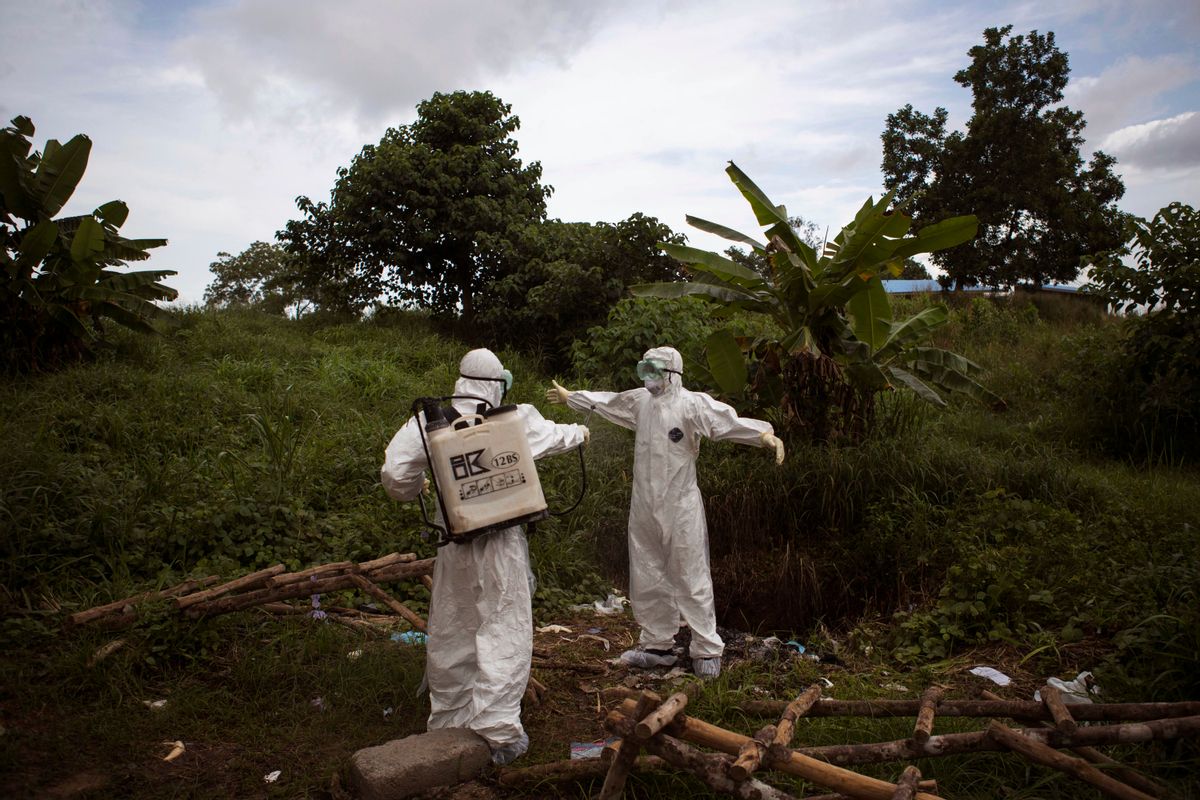President Trump proposed a $54 billion military budget increase to solidify the security of our nation. However, the government also recognizes pandemic threats as an issue of national security — one that knows no borders. ![]()
In the last four years, we have faced the Ebola epidemic — contained after significant loss of life — and Zika, which is still not contained. Collectively, we will feel these effects for a generation, while children born with Zika-related defects and their families will feel the effects every day of their lives.
The U.S. is a leading member of the Global Health Security Agenda (GHSA), a growing international partnership created to respond to infectious disease threats. Yet the Trump budget slashes funding for the very agencies mandated to prevent pandemics. Take, for example, the 37 percent cut to the $50 billion State Department and United States Agency for International Development (USAID) budget, more than one-third of which targets global health security. As a global health researcher, I think this reveals a grave lack of understanding of the nuances and complexity of this national security issue.
The way the military protects America’s welfare is straightforward. The way that other U.S. agencies prevent pandemics is less understood. That it’s complicated shouldn’t stop our commitment to it.
Threats are closer than we realize
There are imminent threats that aren’t in the realm of hypothetical. Here’s an example: In January of this year, the government issued a travel warning in response to an active outbreak of H7N9 bird flu in China.
This strain of avian flu is worrisome because a few small mutations would allow it to spread from person to person. This could be the next pandemic to sweep the globe.
Historically speaking, we are overdue for a bird flu disaster. They have been documented over the past two centuries and appear every 40 years on average; the last one was in 1969.
While preventing pandemics is expensive, it’s infinitely cheaper than the costs of actual pandemics. A report by the World Bank found a bird flu pandemic comparable to those from the last century could trigger a major global recession, with a fall in global GDP between 0.7 percent and 4.8 percent. While that might not sound like much, it represents $833 billion to $5.7 trillion.
Billions have already been spent on pandemics this century. As an epidemiologist who worked for one U.S. pandemic prevention initiative sponsored by USAID, I don’t question the amounts being spent. What I do question is the return on investment using current unproven strategies that do nothing to address the urgency of the situation right now.
National security, science and public health
Since the 1970s, when USAID recognized that improved population health was integral to development goals, the number of infectious disease outbreaks has tripled. In response, USAID created the Emerging Pandemic Threats program, which focuses on discovering new animal viruses that may pose threats to human health.
However, it’s a big jump to identifying an animal virus with pathogenic potential to one that actually “spills over” and infects human populations. Instead of being an applied public health program with immediate potential to prevent pandemics, virus discovery is traditional scientific research. This research also does not address other pathogens that already pose pandemic threat, such as Zika, which is mosquito-borne, or superbugs (i.e., multidrug resistant bacteria). It turns out that the real problem to preventing pandemics is people.
Limited knowledge of human practices that increase risk of infection and of the diseases that pose the greatest risk represent the fundamental challenges to prevention. In 2015, the World Health Organization developed a list of emerging diseases likely to cause severe outbreaks in the near future: Crimean Congo hemorrhagic fever, Ebola virus disease and Marburg, Lassa fever, MERS and SARS coronavirus diseases, Nipah and Rift Valley fever. Three “serious” backup diseases didn’t make the final cut: chikungunya, severe fever with thrombocytopaenia syndrome and Zika (avian flu is treated separately). As history has shown us with Zika, we have a pretty good sense of what we’re up against in terms of disease.
Is there a better way to prevent pandemics?
Tools exist to determine which high-risk diseases are already circulating in human populations. Ebola provides a useful example. Decades before an outbreak was reported, a study found that Liberians had been exposed to Ebola — and survived.
Although there are few studies like this, Liberia is not a unique example. Scientists in Gabon documented Ebola exposure years prior to its first reported outbreak. Disease exposure may predict countries at highest risk for future outbreaks, but provides no information about how people are infected.
That has changed. New tools exist which measure both the diseases that are circulating and the behaviors that put people at risk of catching them. In fact, this approach, which integrates biological and behavioral surveillance, is already familiar to other successful USAID programs.
The closer we come to identifying where an outbreak will occur and which disease will be the likely culprit, the faster we can prioritize areas of highest risk. Targeted prevention strategies include developing diagnostics and vaccines in enough quantity to inoculate the population at immediate risk.
Since outbreaks often happen in remote areas with limited health infrastructure, the ability to vaccinate and detect disease will involve health systems strengthening — again beginning with regions at highest risk of known outbreak potential.
On March 3, the government stated increased concern regarding upgraded H7N9 bird flu. Even if this is not the next pandemic, there is always another threat waiting in the wings. We have the tools to provide a formidable, cost-effective first pass at pandemic prevention. It’s time to get the most bang for the buck we still have left — and to protect our national security on all fronts.
Maureen Miller, Professor, Columbia University Medical Center



Shares